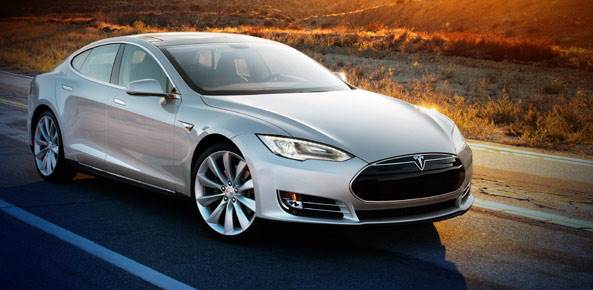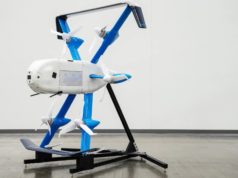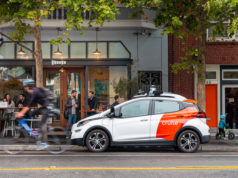A combination of “extremely rare circumstances” last month is believed to have led to the first known fatal crash linked to self-driving car technology, according to a statement released yesterday by Tesla Motors. With an investigation now under way by the National Highway Traffic Safety Administration (NHTSA), the possible impact on the fast-developing autonomous vehicle industry remains to be seen.
Joshua D. Brown, 40, of Ohio was killed May 7 near Williston, Florida, when his 2015 Tesla Model S (similar to the Model S pictured above) drove under an 18-wheel semi-trailer truck that had passed in front of him across a divided highway.
Although the Tesla Autopilot feature was engaged on Brown’s car, the technology apparently did not notice the white side of the truck against the brightly lit sky, according to a Tesla blog post published yesterday.
The crash should give federal regulators a reason to slow down their efforts to develop new guidelines for self-driving cars, the advocacy organization Consumer Watchdog said in a statement yesterday. The group is asking the NHTSA to launch a public rule-making process on autonomous vehicles, as well as set requirements that such cars must always have steering wheels and pedals to allow human drivers to take over if needed.
‘Technology Is in Doubt’
Tesla’s statement yesterday regarding the fatal crash noted that it was the first “in just over 130 million miles where Autopilot was activated.” The statement added that Tesla disables the Autopilot feature “by default and requires explicit acknowledgment that the system is new technology and still in a public beta phase before it can be enabled.”
John Simpson, the director of Consumer Watchdog’s Privacy Project, told us today that Tesla is trying to “have it both ways” by promoting the use of self-driving technology and then stating that the feature is in beta.
“We hope this is a wake-up call to federal regulators that we still don’t know enough about the safety of self-driving cars to be rushing them to the road,” Consumer Watchdog executive director Carmen Balber said in a statement released yesterday. “If a car can’t tell the difference between a truck and the sky, the technology is in doubt.”
Calls for Formal Rule-Making Process
Tesla is just one of many companies working to bring autonomous vehicle technology to the world’s roadways. Google’s self-driving car project, for example, has logged even more miles to date than Tesla’s, having passed 1.6 million miles as of May 31, according to Google’s most recent monthly report.
While the NHTSA held two public meetings in April to seek guidance on its pending regulations for autonomous vehicles, Simpson told us Consumer Watchdog’s position is that the agency really needs to have a formal rule-making process that allows members of the public to offer input at different stages.
Tesla said that it notified the NHTSA about the fatal crash in Florida immediately after it occurred and noted that the agency’s investigation into the incident is “simply a preliminary evaluation to determine whether the system worked according to expectations.”
Victim Was an Advocate of Innovation
The company’s statement also expressed sympathy to Brown’s family and friends, calling him “a friend to Tesla and the broader EV [electric vehicle] community, a person who spent his life focused on innovation and the promise of technology.”
An 11-year veteran of the U.S. Navy and a member of the Naval Special Warfare Development Group, known as SEAL Team Six, Brown later established a technology company called Nexu Innovations that provides wireless Internet mesh services, custom product development and 3D printing services.
“I started Nexu Innovations with two things in mind: to make a difference and to have fun,” Brown said on his company’s “About Us” Web page. “When I look at the world around me I see what it could be. I focus on what could be done to make this world a better place. I then take these ideas and see if I can make them a reality.”
In April, Brown published a video on YouTube crediting the Autopilot feature on the car he dubbed “Tessy” for preventing a collision with a boom lift truck.







